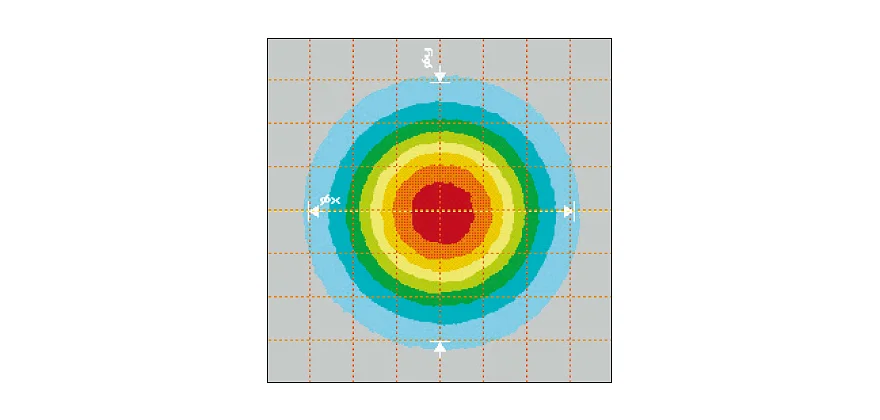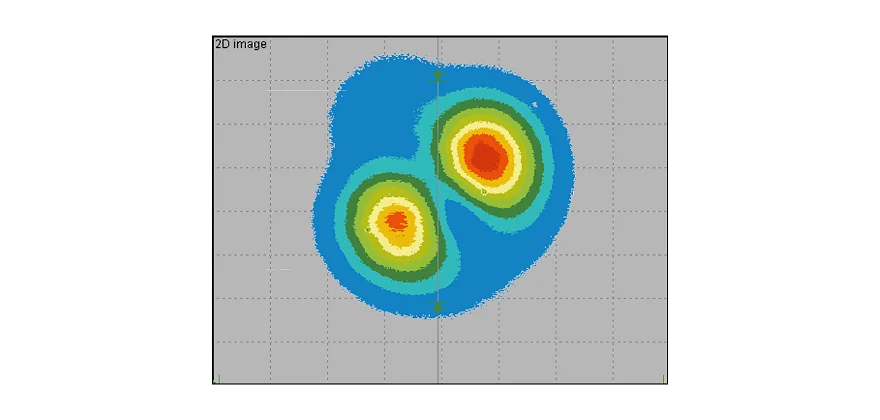Cut-off wavelength of single-mode or PM fibers

Cut-off wavelength
The cut-off wavelength λco is defined as the shortest wavelength for which the fiber is single-mode. The mode field can only have a Gaussian intensity distribution and rotational symmetry at wavelengths above λco.
If the wavelength of the guided radiation is shorter than the cut-off wavelength, two or more modes are guided. The beam and intensity profile then differ significantly from a Gaussian distribution. The mode field distribution depends on bending or temperature variations (butterfly effect).

Mode field of a singlemode fiber used within the operation range
Gaussian mode field within a step index single-mode. The transmitted wavelength lies within the opertaion range of the fiber.

Resulting intensity distribution at fiber exit
The resulting intensity distribution at the fiber exit is Gaussian.

Mode field of a singlemode fiber used below cut-off
For a transmitted wavelength below cut-off the mode field within the step index fiber shows multiple modes (butterfly effect).

Resulting Butterfly effect
The resulting intensity profile at the fiber exit is also non-Gaussian.